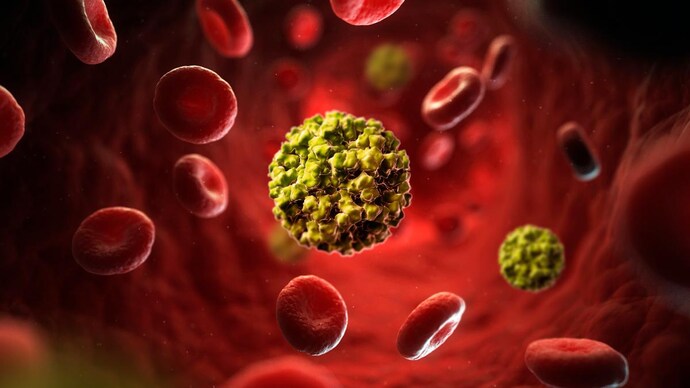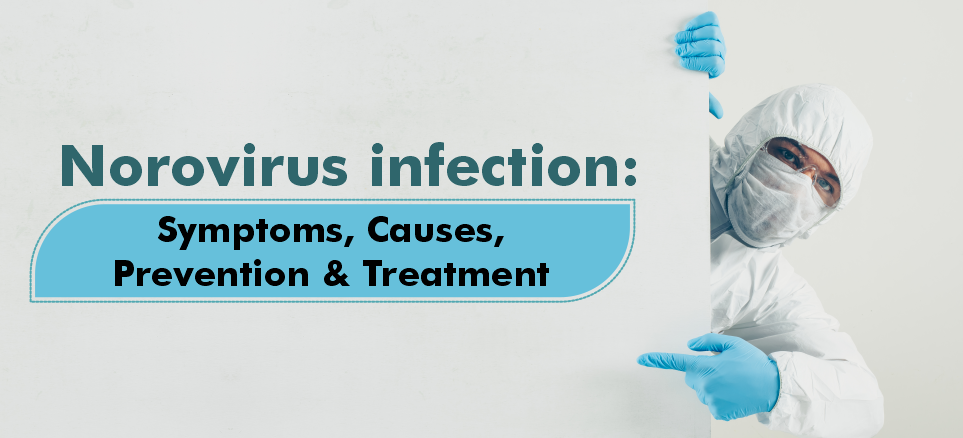
Norovirus, often referred to as the “stomach bug” or “winter vomiting bug,” is a highly contagious virus that causes gastroenteritis, resulting in severe vomiting and diarrhea.
Although it frequently occurs in localized outbreaks, norovirus has gained worldwide attention due to its ability to rapidly spread in various settings, such as cruise ships, schools, hospitals, and restaurants.
Read: Yamuna Water Level: A Growing Concern
This article aims to shed light on the nature of norovirus, its symptoms, transmission, prevention, and treatment.
Read: 9 Best Shoes for a Casual Bike Ride
The Nature of Norovirus
Norovirus is a member of the Caliciviridae family and is one of the most common causes of gastroenteritis worldwide. It is a small, spherical virus that possesses a single-stranded RNA genome.
There are multiple strains of norovirus, with the GII.4 strain being the most prevalent and responsible for many outbreaks.
Symptoms of Norovirus Infection

Norovirus infections typically manifest within 24 to 48 hours after exposure and can last for 24 to 72 hours.
Read: Four Easy Ways To Relax Your Body
The symptoms include sudden onset of nausea, vomiting, watery diarrhea, stomach cramps, and, in some cases, low-grade fever, headache, and body aches. These symptoms can be quite debilitating, leading to dehydration, especially in young children and older adults.
Transmission Routes
Norovirus is highly contagious and can spread through various routes. The most common mode of transmission is through the fecal-oral route, either by consuming contaminated food or water or by direct contact with an infected person. The virus can also be transmitted through aerosolized vomit particles, which can contaminate surfaces and objects.
Read: 7 Abs Training Mistakes
Consequently, touching contaminated surfaces and then touching the mouth, nose, or eyes can lead to infection. Additionally, norovirus can survive on surfaces for extended periods, making it easy for outbreaks to occur in crowded areas.
Preventing Norovirus Infection
Preventing norovirus infection requires a multi-faceted approach that involves personal hygiene, proper food handling, and environmental disinfection. Here are some preventive measures:
- Practice thorough hand hygiene: Wash hands frequently with soap and water for at least 20 seconds, especially after using the restroom, before eating or preparing food, and after changing diapers.
- Use hand sanitizers: When soap and water are unavailable, use an alcohol-based hand sanitizer with at least 60% alcohol content to kill the virus.
- Avoid contaminated food and water: Consume properly cooked food, wash fruits and vegetables thoroughly, and drink safe, bottled or treated water.
- Clean and disinfect surfaces: Regularly disinfect frequently-touched surfaces using an EPA-approved disinfectant to eliminate norovirus particles.
- Stay home when infected: If you have norovirus symptoms, avoid preparing food for others and limit contact with people, especially in communal settings, until at least 48 hours after symptoms subside.
Treatment and Management
Currently, there is no specific antiviral medication for norovirus. The primary focus of treatment is to manage symptoms and prevent complications. It is crucial to stay hydrated by drinking plenty of fluids to replace the lost fluids from vomiting and diarrhea. Oral rehydration solutions or electrolyte drinks can be used to replenish lost minerals and maintain hydration. Resting and following a bland diet can aid in recovery. In severe cases, medical attention may be required to address dehydration and other complications.
Conclusion
Norovirus is a highly contagious virus that causes gastroenteritis, resulting in severe vomiting and diarrhea. Its ability to spread rapidly in various environments poses significant challenges in outbreak control.
By understanding the nature of norovirus, its transmission routes, and adopting appropriate preventive measures, we can minimize the risk of infection and help contain outbreaks.
Practicing good hand hygiene, proper food handling, and maintaining a clean environment are key steps in curbing the spread of this notorious stomach bug.





